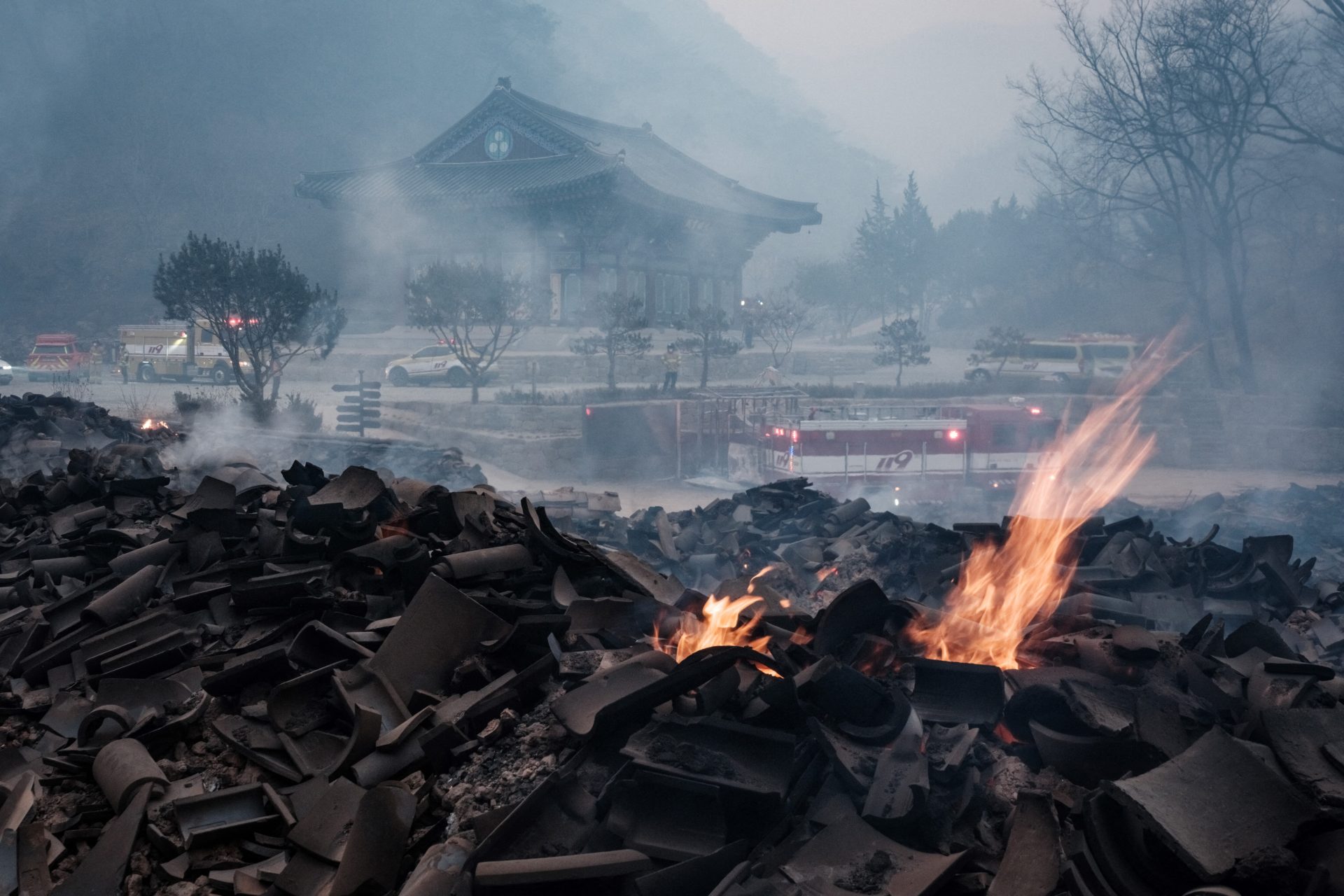Human-induced climate change made the warm, dry, and windy conditions that fueled South Korea’s deadliest wildfires in March twice as likely and significantly more intense, a new scientific study said Thursday.
A report by World Weather Attribution (WWA), a global research collaboration that analyzes the influence of climate change on extreme weather, found that climate change made the fire conditions “twice as likely and about 15 percent more intense.”
“South Korea’s deadliest wildfires were made much more likely by climate change,” said Clair Barnes, a researcher with WWA and the Centre for Environmental Policy at Imperial College London, Agence France-Presse reported.
The March blazes killed 31 people and scorched vast parts of the country’s southeastern region, destroying historical sites, including a temple complex believed to be over a thousand years old.
The fires occurred after months of below-average rainfall and amid strong winds, following what was South Korea’s hottest year on record in 2024, according to local officials.
“These unprecedented conditions exposed the limits of even well-developed suppression systems,” WWA said in its findings. “With fires increasingly likely to exceed control capacity, the emphasis must shift toward proactive risk reduction.”
The report noted that more than 62 percent of South Korea is forested, with dense tree cover particularly prominent in mountainous and coastal regions, which influence fire behavior.
About 11 percent of these forested areas are near human settlements, “particularly susceptible to ignition,” and accounted for nearly 30 percent of wildfires recorded between 2016 and 2022.
While the study attributed higher temperatures and the increased risk of fire weather — assessed using the Hot-Dry-Windy Index (HDWI) — to climate change, it found no direct link between global warming and rainfall levels during the fire period.
South Korea, which imports most of its energy, continues to rely on coal for roughly one-third of its electricity, based on data from the International Energy Agency.
The country’s dependency on fossil fuels has raised concerns among scientists and environmentalists amid increasing climate-related disasters.
The fires also highlighted the country’s demographic challenges, as many of the fatalities were elderly residents in rural areas that are aging and shrinking in population.
Experts have said rebuilding in the affected regions will be difficult due to limited local resources and manpower.
Since the March infernos, wildfires have continued across South Korea. In April, helicopters were dispatched to extinguish a fire in the Demilitarized Zone (DMZ) between South and North Korea. This week, over 2,000 people were evacuated after a blaze broke out on Mount Hamji in Daegu, southeastern South Korea.
WWA’s work in “attribution science” compares real-world climate data — now around 1.3 degrees Celsius warmer than pre-industrial levels — with simulations of a world unaffected by human-generated emissions, offering timely insights into how global warming is shaping extreme weather events.







